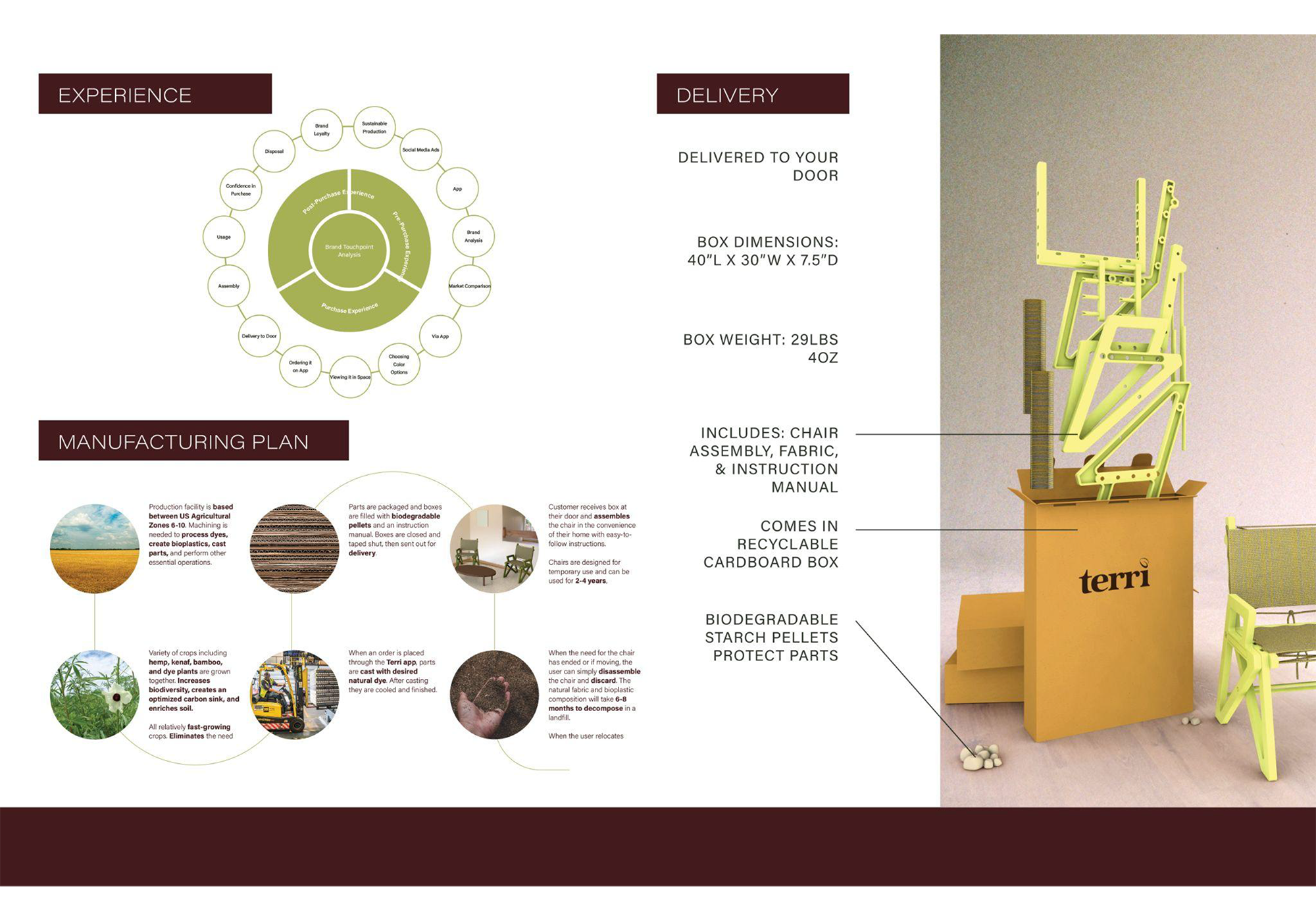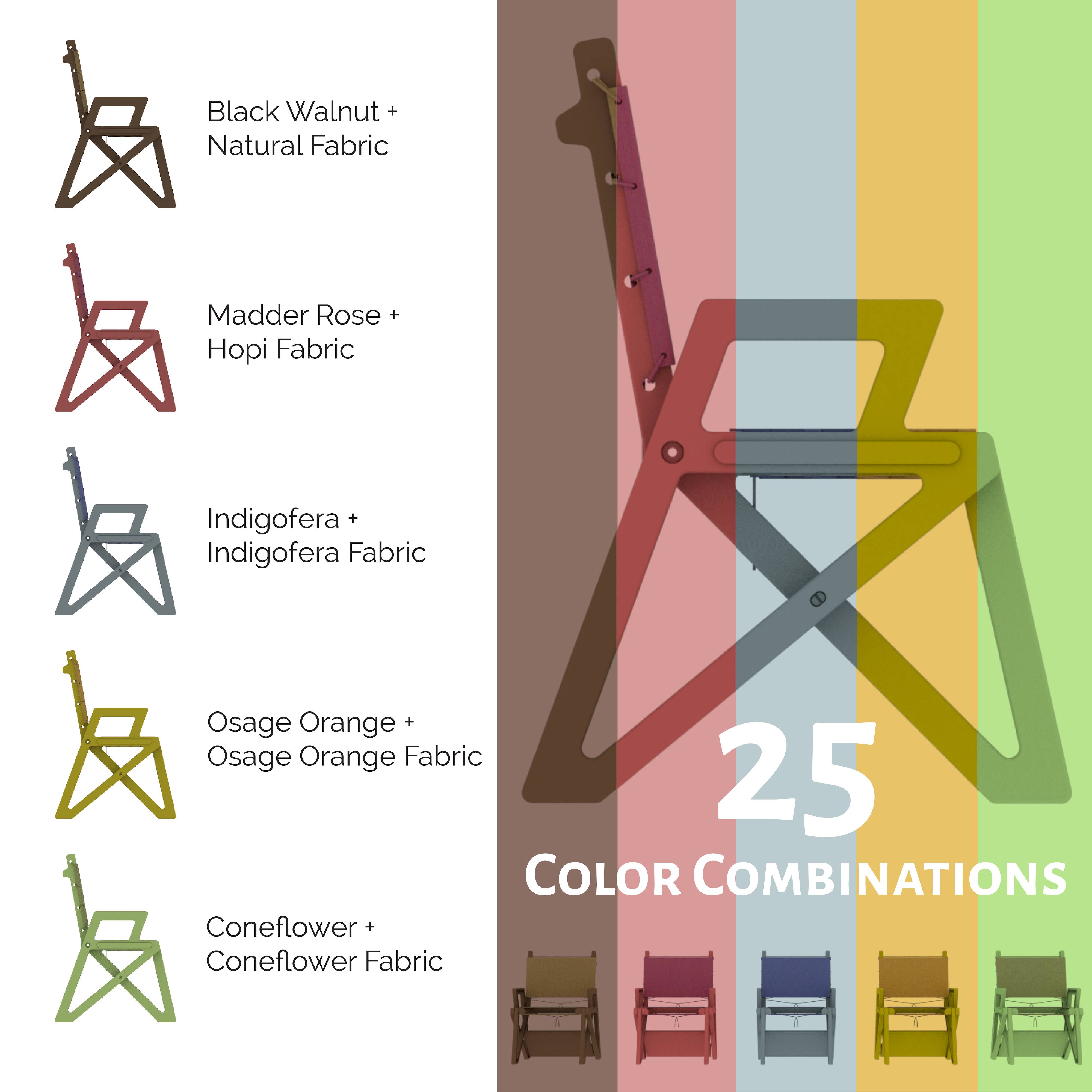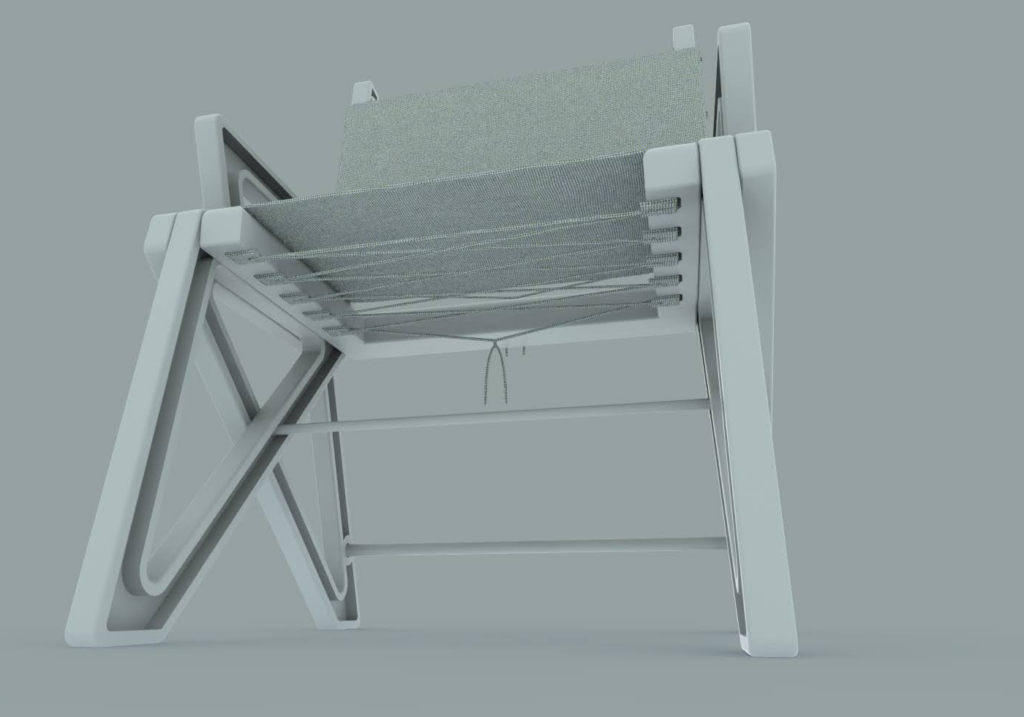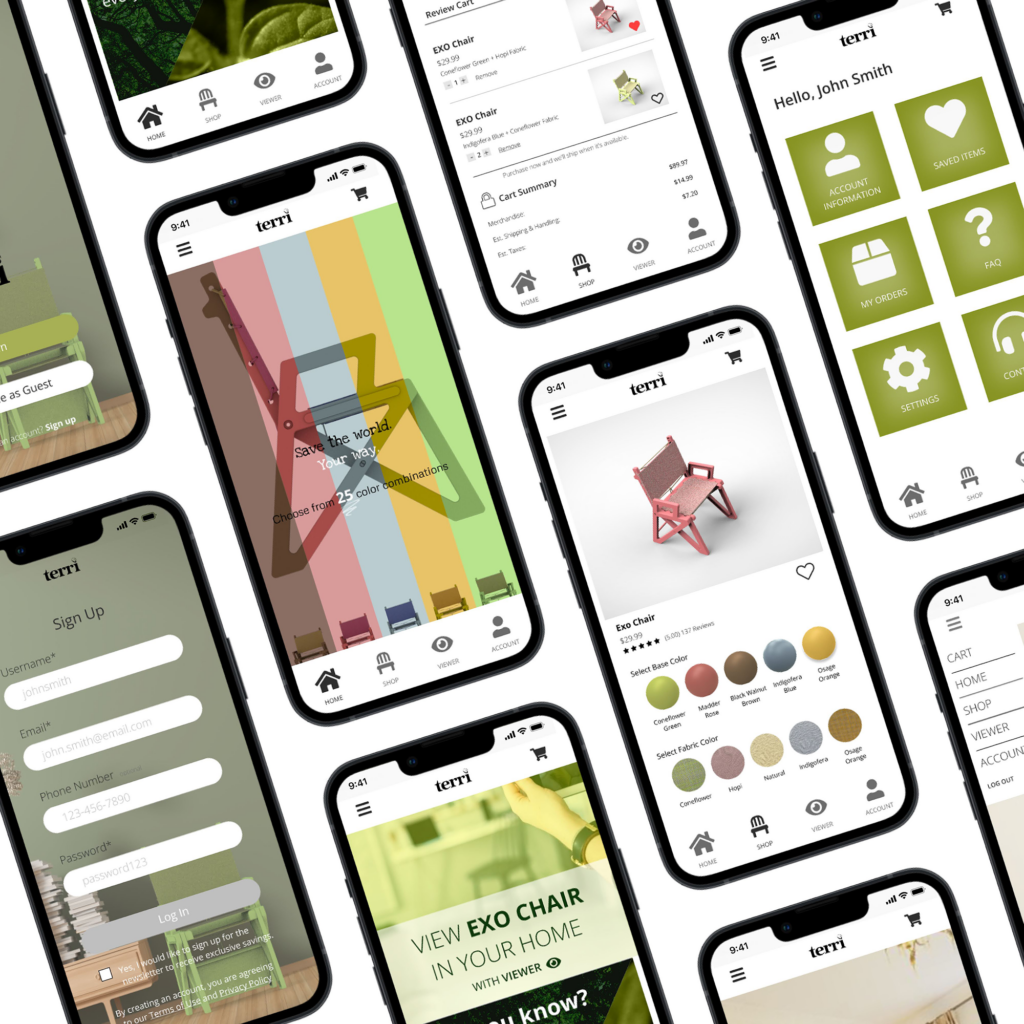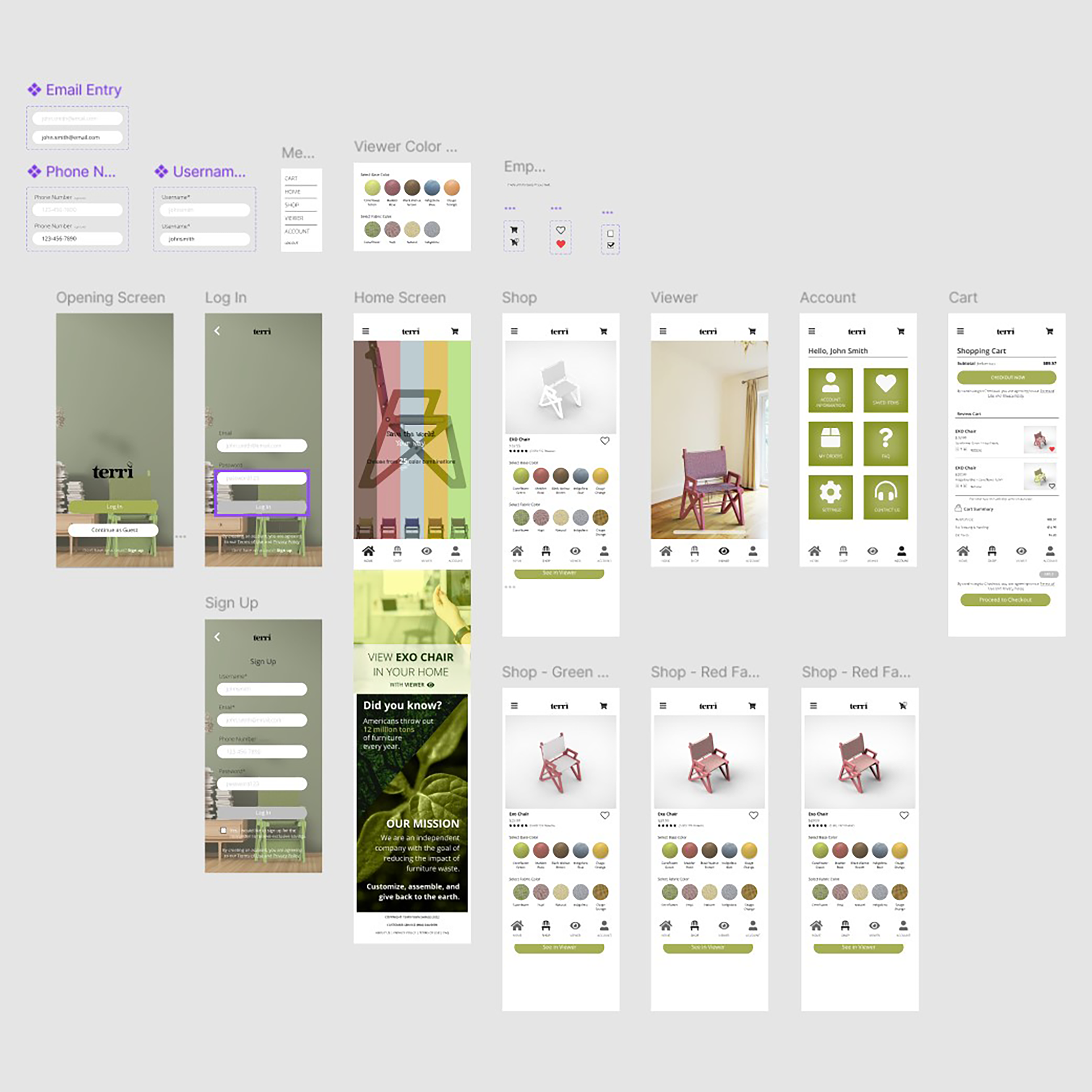exo chair
For my BFA thesis assignment, I wanted to address a common issue I had seen plague myself as well as many of my peers that also tied back into my passion for consumer furnishings. For many college students, the transition to adulthood brings a newfound sense of freedom and independence that fosters a desire for self-expression, personal growth, and the ability to carve their own paths. Furnishing a new dorm or apartment is one of the exciting ways these young adults can define their own style. Typically, this is when parents, friends, and sometimes movers are enlisted to help haul the larger, heavier items, however, what happens if you move states away or don’t have the extra cash to pay for movers?
(photo by RDNE Stock project: https://www.pexels.com/photo/man-in-blue-denim-jeans-sitting-on-green-sofa-7464722/)
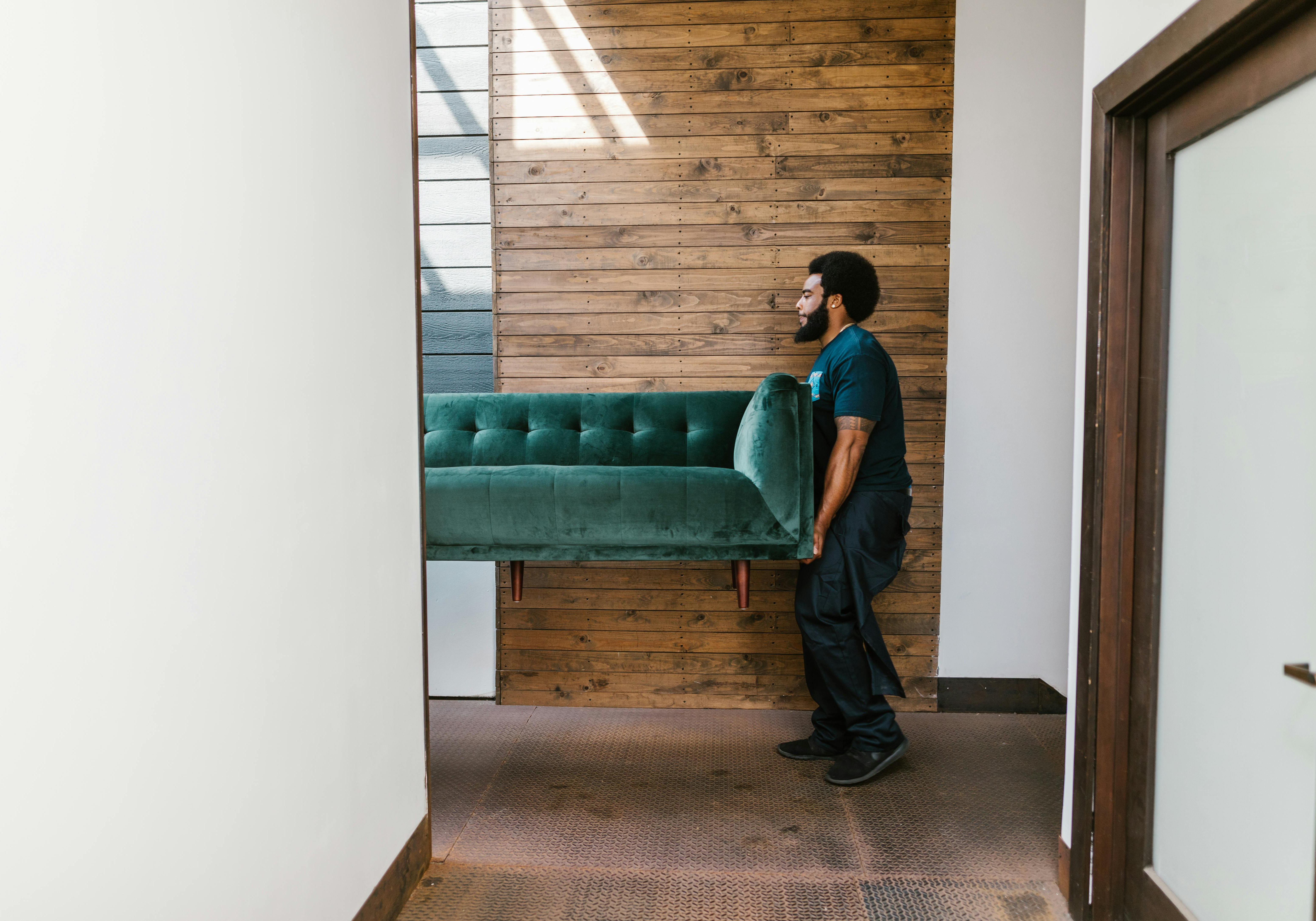
This is where Exo furniture comes in. I focused on a chair design for this project, however, this idea can be translated to tables, beds, lamps, and other items. Typically, when faced with this challenging scenario, many consumers’ first thought is convenience over environmental impact, so they order a piece from Amazon or pick something up at Target. With Exo, the consumer does not have to experience guilt around the effects of harmful materials once disposed of, but can purchase pieces with confidence, knowing the chairs were sustainably sourced, produced, and can be safely disposed of.
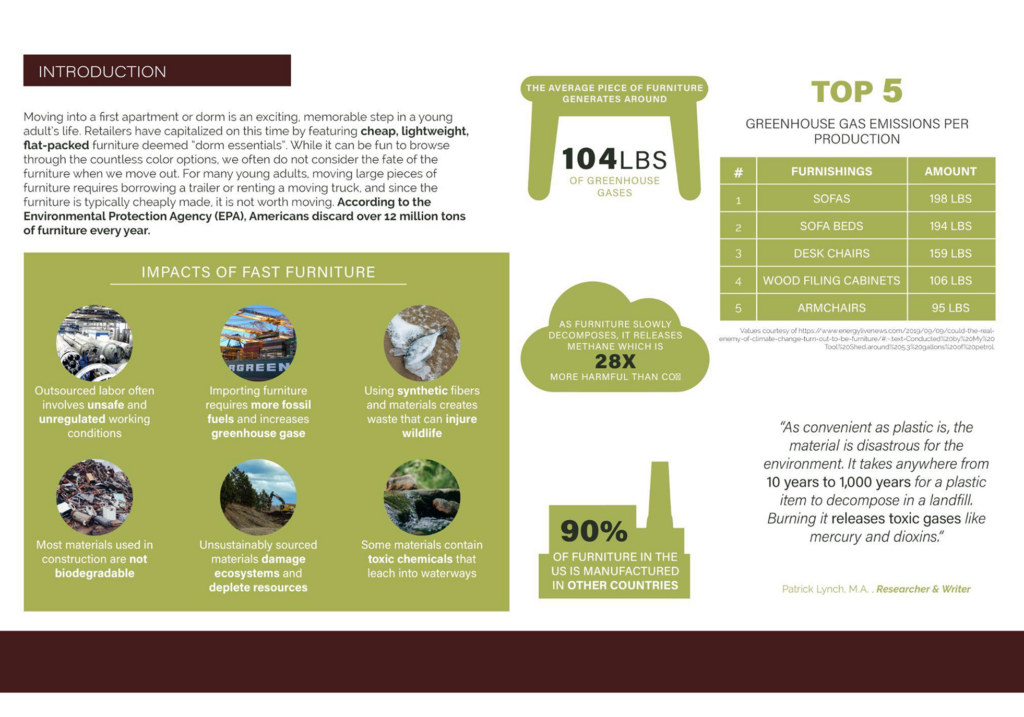
I enjoyed exploring different forms for this project while working within the constraints of my materials and production methods. I worked through various concepts addressing the challenge of designing something that could be flat-packed, lightweight, and easy to assemble, ensuring both functionality and practicality.
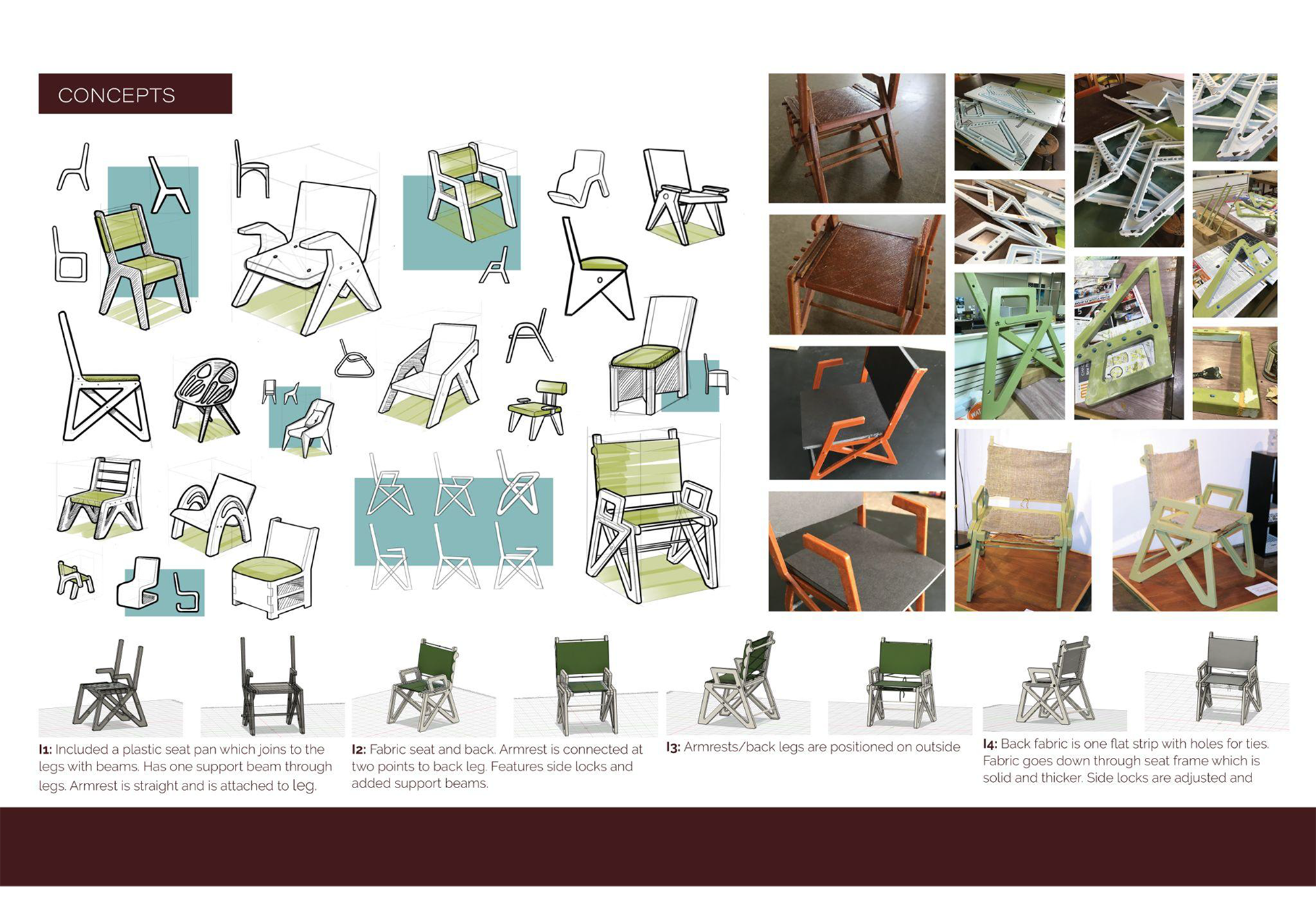
Months of researching responsible materials and production methods led me to finding a better way to approach manufacturing these furnishings. The chairs would be made from a combination of bioplastics sourced from a variety of bamboo, kenaf, hemp, and renewable dye plants such as Osage orange and black walnuts. This eliminates the need for monoculture production and actually encourages local biodiversity, avoids microplastics, and best of all, all of the plants can be grown in US temperate zones, which means no need for importing/ exporting. Once the chair is discarded, it will decompose in an outdoor environment in less than a year.
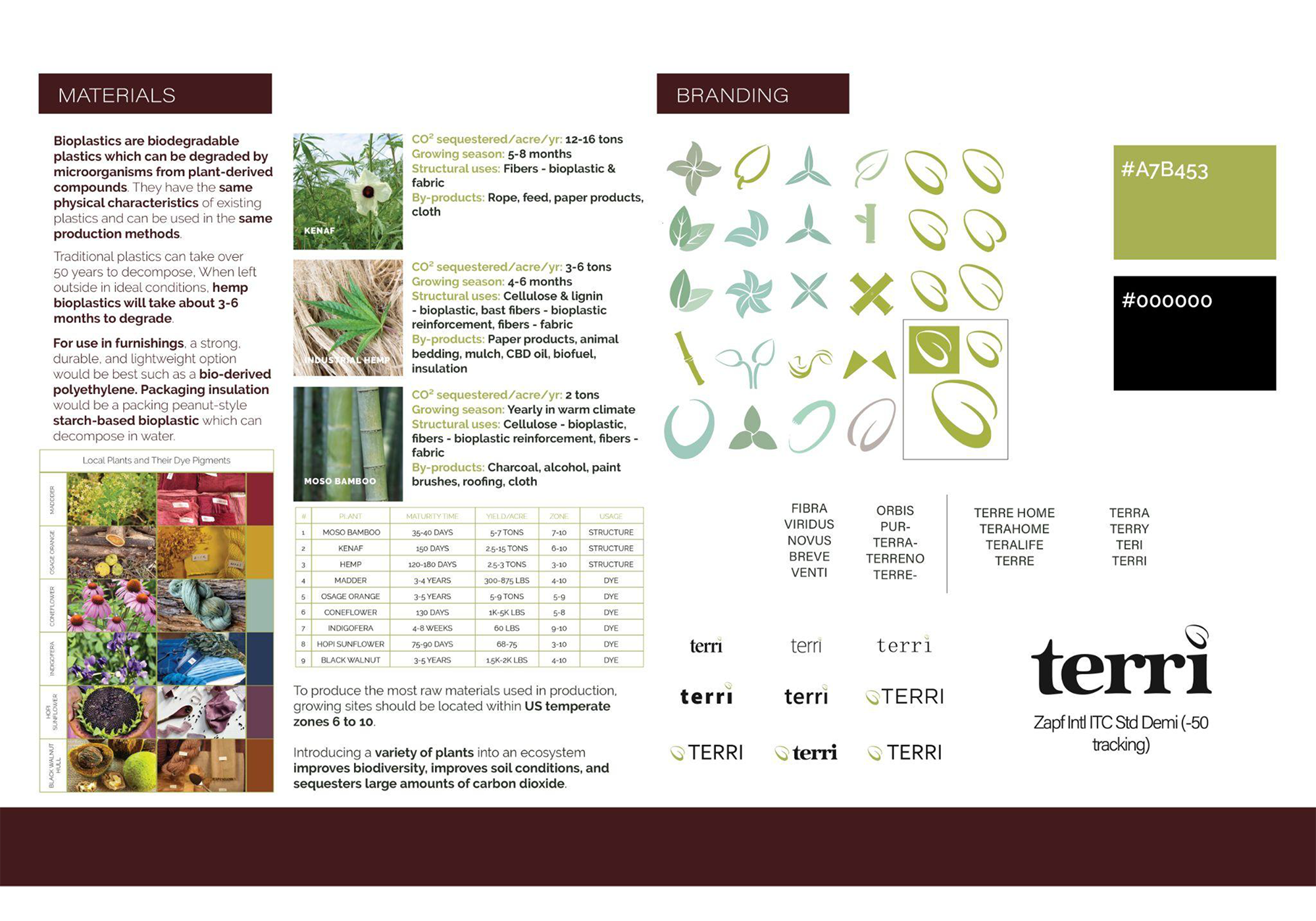
The injection molded parts would be packaged in a cardboard box with biodegradable starch pellets. The box would be less than 30lbs making it possible for one person to transport. I also designed an app that consumers could use to see how the Exo chair would look in their space, as well as to see the various color combinations and make ordering easy. As a designer, I feel a strong responsibility to consider the environmental impact of my products. I truly enjoyed emphasizing this aspect in this project, highlighting the importance of sustainability and making thoughtful design choices that minimize harm to the planet.
